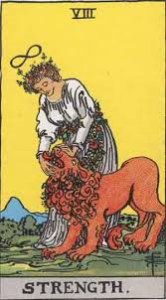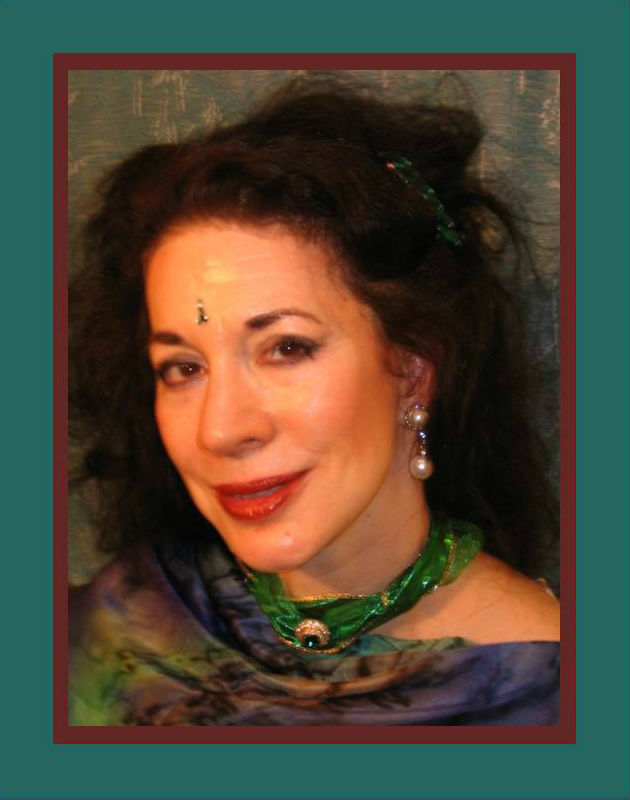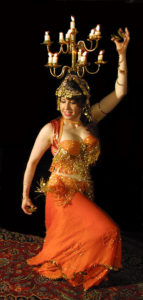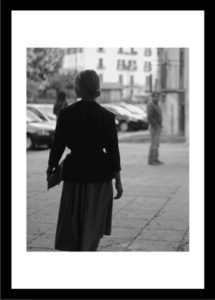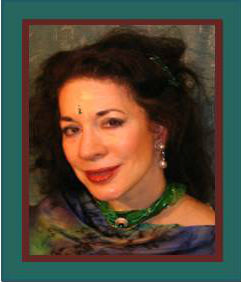An Energy Makeover – Something That We ALL Need!

Two days ago, a dear, wise, and trusted counselor told me that I needed to clear out my attachment to needing my father’s approval. As a gifted intuitive, she could see the “energy cord” linking me to – not so much him, per se (he died Thanksgiving weekend of last year) – but to my still-ongoing desire for his approval. For his affection. For his attention.
Yup, I thought to myself. She’s right.
Moreover, she was telling me that once I did this – cleared out this energy-attachment once and for all – I’d be free to experience the abundance and prosperity that I desired.
What more of a motivation does a girl want?
This sure triggered an avalanche of response in me.
Clearing Out Psychic Baggage While Doing Housework
I spent all day yesterday burning off physical energy by cleaning the front porch and bringing in the big potted plants, so they could winter over safely. I found all sorts of ways to discharge physical energy while I opened up my mind to clearing out the attachment energy.
Forgiveness, as we all know, is the only way to do this.
I’ve been working on this for a year now. In fact, spiritual housecleaning has been the one thing that pulled me through grief after Daddy died last year. But having dealt with the most immediate shock, and nearly having completed a year of mourning (surprise, it really has taken a year), it’s time to work at a deeper level.
So, I’ve started a new practice.
I resumed meditation practice, on the advice of both this counselor and another one, about a month ago.
Now, I’m tacking on one more thing.
After basic meditation, I bring to mind three things where I still feel some pain (loss, heartbreak, sorry, and even just plain pissed-off-ness) about my father. Do the forgiveness schtick. As best I can (and sometimes it’s a bit ungainly).
I try keeping the list to just three items per pass; no use dredging things up much more – I know this will take some time.
Then, I bring to mind as many things as I can for which I’m thankful, appreciative, have good memories. (Thankfully, there really are a lot of those!). About six to ten does the trick.
Sometimes (a whole lot more often than not), I have to do a similar process with yet another man who’s played a role in my life. (While there have been some absolutely lovely men; men whose valour, nobility, and kindness I’ve absolutely loved, there have also been – shall I say this kindly? And with no disrespect for the bird that will grace many of our tables in just a few weeks? – some real turkeys.)
So What’s A Girl to Do?
Forgiveness is the foundation. It’s the one single spiritual practice where – if we make even a half-a**ed attempt (and I mean a diligent half-a**ed attempt; not a fluffy one) – when we complete this lifetime, we get a passing grade. Everything else is bonus points.
There really are four disciplines, and we factor them into our practice throughout the year:
- Autumn (Season of Cups/Water) – giving love – “filling our cups,”
- Winter (Season of Pentacles/Earth) – gratitude – “getting grounded” through appreciating what we have,
- Spring (Season of Air) – gforgivenesse – the foundation practice,
- Summer (Season of Fire) – focusing our thoughts – reality co-creation through focused intention.
My personal experience – and that of my teachers (those who do energy work) – is that these are essential to releasing our personal baggage; the stuff that holds us back.
Energy Practices Complement both the Spiritual and the Physical
We have to do our spiritual homework. That’s obvious. If we fail to do this work, our lives (not to mention health, abundance, relationships, and everything else) will get stuck.
We also need correct basic physical practices – everything from good diet to stretching, taking walks, checking in our posture for good alignment, and all these related things.
In addition – and something which is an essential component of our school – we also do energy practices. Yogis practice these as part of their more advanced work. Internal martial artists use energy as part of their art. We also include energy practices; we make them part of our etudes (study pieces), our choreographies, and even our improvisations.
A Specific Discipline – Energy-Washing
I’m re-igniting my own study of energy work, using books and sources that I’ve collected for nearly forty years. As I factor these materials into curriculum, I’ll post reference pages. (These will become new Resources pages. Will announce in this blog when they’re up.)
There is a specific method – I’ll call it “energy washing” – that we can use to bring greater life-force energy into our etheric bodies, or personal energy fields. The methods for this are very similar to those of Chi Kung. I’ll be teaching these in class over the next several sessions.
I’m re-engaging these energy practices and putting them into dance form. Not much to say in words yet; will show you specific examples if you’re going to be in class with me.
Very, Very Odd
Physical things – just as with people and experiences – come into and out of our lives as needed.
Odd things are happening – will share more in class on Sunday.
Until then, I’m heading down to the Diva Den for morning practice.
See you soon!
yours in dance – Alay’nya










